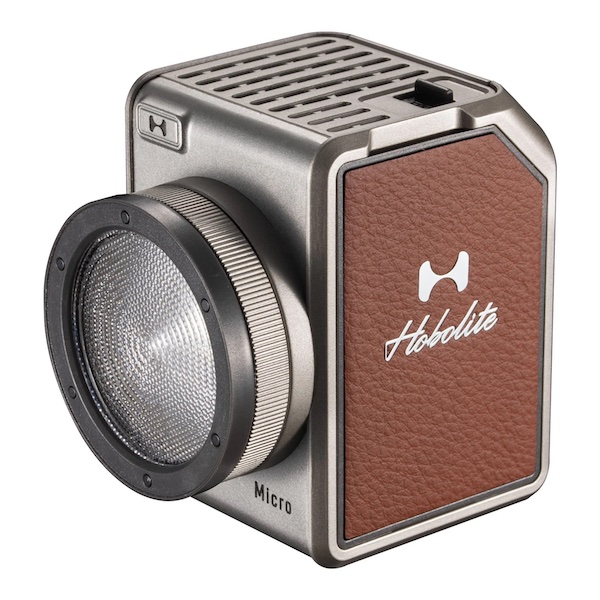Lighting
Canon’s latest Speedlite, the 470EX-AI, offers a new twist with its unique Auto Intelligent (AI) Bounce technology. Thanks to this innovative feature, the Speedlite can determine and automatically position the flash head at the optimum bounce angle and adjust the angle when you switch from horizontal to vertical shooting orientations and back again. If you’d rather choose your own bounce angle, a semi-automatic mode is also available. Naturally, the 470EX-AI functions as a standard E-TTL Speedlite as well, and it features high speed sync.
While it lacks the more sophisticated wireless radio features of the 600EX II-RT and the 430EX III-RT, the mid-range $400 470EX-AI can be used as an optical off-camera receiver. But its standout feature is, of course, the Auto Intelligent Bounce.
As of this writing, AI Bounce compatibility is limited to newer Canon EOS cameras (check Canon’s website for compatible models). However, the semi-AI Bounce mode can be utilized with every Canon EOS digital SLR and a long list of Canon EOS film cameras. I tested the flash with the Canon EOS-1D X Mark II with an EF 24-105mm f/4L IS USM lens.
Design
The 470EX-AI is well constructed and has a quality feel. It weighs 13.6 ounces (without batteries), measures 2.94 x 5.13 x 4.14 inches and was well-balanced on the 1D X Mark II. The well-lit rear control panel is pretty standard fare with physical buttons, dials and an easy-to-understand menu system with 10 custom and 9 personal functions. A three-way switch above the panel provides the three AI Bounce options: off, semi-automatic and fully automatic. A separate button, lit in blue, triggers the flash’s AI Bounce function when pressed. The flash head can be rotated 180 degrees left or right and up to 120 degrees vertically, and it can be bounced off ceilings up to 23 feet high.
The Speedlite’s automatic zoom range is 24-105mm on full-frame cameras, with a built-in, pull-down panel that spreads coverage to 14mm. The flash is bundled with a carry case, stand and bounce adapter, but there is no built-in, pull-down reflector panel.

The Canon 470EX-AI’s fully automatic intelligent bounce feature angled the flash head perfectly to eliminate shadows on this close-up of a Kachina doll.
Performance
Powered by four LR6 alkaline or HR6 Ni-MH batteries, Canon estimates the number of flashes to come in between 115 to 800 (alkalines) and 140 to 966 (Ni-MH). You’ll also get slightly faster recycling times with Ni-MH batteries—up to about 0.1 to 3.5 seconds. After several days of frequent flash and fully automatic and semi-automatic AI Bounce shooting, there was plenty of battery life left over using Ni-MH batteries. And while I sometimes shot faster than the flash recycled, more often than not, the battery was ready to go almost instantly when shooting at lower power settings. Of note: Recycling is silent, so it won’t disturb or distract your subjects.
To get started with fully automatic AI Bounce, just move its switch to F, frame your subject and press the blue AI Bounce button. The 470EX-AI fires pre-flashes to measure flash-to-subject and flash-to-ceiling (or wall) distances and automatically positions the flash for the best bounce angle. It takes a few seconds to complete the function initially, and you have to repeat the process when you change locations or subject/bounce distances. What’s really cool is how the flash adjusts the bounce when you switch from vertical to horizontal or vice versa. Just reorient the camera, tap twice on the shutter button and the flash head automatically adjusts to give you the same optimum bounce angle.
If your camera does not support the full-automatic AI Bounce or you’d rather position the flash manually, the semi-auto mode works similarly. The only difference is that you set the flash angle, then press the Angle Set button on the side of the flash to put the angle into memory so the Speedlite knows how to reposition the head when you change orientations.
Other options include a couple of different custom Personal Function settings that streamline the process to a single or half-press of the shutter button. Regardless of which mode you use, the AI Bounce can be a real time-saver, particularly when changing orientation and if your bounce skills need help. But saving time is nothing without good exposure and consistency—both of which this flash delivers.
What we liked
Naturally, the 470EX-AI’s motorized head is the main attraction of this flash, bolstered by its ability to consistently choose a bounce angle that provided excellent exposure. I often change orientation when shooting handheld, and having the flash not only choose but automatically adjust the bounce angle was a real time-saver, too. Although the technology behind the AI Bounce feature might be complex, it was very easy to implement both the full- and semi-auto functions. Battery life is very good and the flash is relatively powerful with a GN of 47 (154 ft at ISO 100). The AF assist beam worked well, too.
What we didn’t like
The 470EX-AI has some limitations, including its 24-104mm zoom range. To get wider, you need to use the wide-angle panel. Not a huge deal, but we’d like to see a broader zoom range. The few seconds it takes for the flash’s motor to process and adjust the angle can seem a little slow, and if you’re extremely adept at choosing the proper bounce angle under a variety of conditions, this may not be the flash for you— especially given its $400 price point and its ability to only act as an optical slave.
How it compares
If wireless is important to you, it’s best to check out the 430EX III-RT or the 600EX II-RT. The former is a little less expensive (and less powerful) at $300 than the AI Bounce flash but offers the flexibility of RT wireless control. For more power and RT convenience, the 600EX II-RT will set you back about $580. Frankly, I enjoyed shooting with the 470EX-AI; not only was it kind of fun, but its automatic bounce positioning allowed me to concentrate more on my subject than positioning and repositioning the flash head. Is it fast enough for shooting action at a wedding? Perhaps not, but you always have the option of turning the AI feature off. However, it’s good to know that when you do need a little bounce help, it’s there when you need it.
Related: 15 Top Strobes, Continuous Lights and Modifiers
The Best of the Best: TIPA World Awards 2018 Winners Are In
6 Portrait Photographers Share Their Biggest Lighting Challenges





